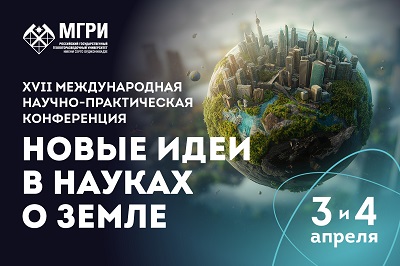Development Programme of Sergo Ordzhonikidze Russian State University for Geological Prospecting (MRGI) for 2023—2027
https://doi.org/10.32454/0016-7762-2022-64-2-8-17
Abstract
Russia’ national Programme for the Reproduction of the Mineral Resource Base cannot be implemented successfully without coordination between the quality of mining specialist training and the pace of developing mineral resources both in terms of solving methodological issues and providing stable funding.
The Sergo Ordzhonikidze Russian State Geological Exploration University carries out its activities aimed at training specialists for organizations of the Federal Agency for Subsoil Use. This direction is elucidated in the Programme and Development Strategy of the University for 2023–2027.
About the Author
Yu. P. PanovRussian Federation
Yuri P. Panov — Cand. of Sci. (Engineering), Senior Researcher, Acting Rector
23, Miklukho-Maklaya str., Moscow 117997
tel.: +7 (495) 255-15-10 (ext. 2002
SPIN-code: 9249-9725
References
1. Vernadsky V.I. About science. T. 1. Scientific knowledge. Scientific creativity. Scientific thought. Dubna: Phoenix, 1997. 576 p.
2. Vercheba A.A., Oganesyan L.V. Ways of improving higher geological education // Exploration and protection of mineral resources. 2016. No. 12. P. 3—8.
3. Geology of the future. Geological branch of the Russian Federation by the beginning of the 2050s. Informational and analytical materials. Moscow: JSC “Rosgeologiya”, 2017. 85 p.
4. The State Program “Scientific and Technological Development of the Russian Federation”, approved by the Decree of the Government of the Russian Federation dated March 29, 2019 No. 377.
5. Grabchak L.G., Bryukhovetsky O.S. A controversial issue. Inefficiency of the reform? Education Today, 2006. No. 10. P. 87—90.
6. Results of the work of the Federal Agency for Subsoil Use in 2018. Informational and analytical materials. Moscow: Ministry of Natural Resources. 2019. 56 p.
7. Kozlovsky E.A. (ed.) Handbook of the head of a geological organization (enterprise): in 2 t. T. 1. Moscow: CPU “Rainbow”; 2017. 672 p.
8. Korsakov A.K., Grabchak L.G., Bryukhovetsky O.S. Development strategy of the Russian State Geological Exploration University // News of higher educational institutions. Geology and exploration. 2007. No. 6. P. 96—98.
9. Lisov V.I., Bryukhovetsky O.S. Problems of geological and mining education taking into account new factors of economic growth in Russia // Izvestia of higher educational institutions. Geology and exploration. 2016. No. 4. P. 75—80.
10. Decree of the Government of the Russian Federation dated October 06, 2021 No. 2816-r “On the list of initiatives for the socio-economic development of the Russian Federation until 2030”.
11. Strategy for the development of the mineral resource base of the Russian Federation until 2035. Approved by the Decree of the Government of the Russian Federation dated 22.12.2018 No. 2914-p
12. The Strategy of economic security of the Russian Federation for the period up to 2030. Approved by the Decree of the President of the Russian Federation dated 13.05.2017. No. 208.
13. Federal State educational standard of higher education — specialty in the specialty 21.05.02 Applied Geology. Moscow: Ministry of Education and Science; 2020. 18 p. URL: http://fgosvo.ru/uploadfiles/FGOS%20VO%203++/specifications/210502_C_3_18062021
14. Federal state educational standard of higher education — specialty in the specialty 21.05.03 Technology of geological exploration. Moscow: Ministry of Education and Science; 2020. 28 p. URL: http://fgosvo.ru/uploadfiles/FGOS%20VO%203++/Spec/210503_C_3_18062021
15. Vercheba A.A. Personnel training for the mining and geological complex of Russia. Mining Science and Technology (Russia). 2021. Vol. 6. No. 2. P. 144—153. https://doi.org/10.17073/2500-0632-2021-2-144-153
Review
For citations:
Panov Yu.P. Development Programme of Sergo Ordzhonikidze Russian State University for Geological Prospecting (MRGI) for 2023—2027. Proceedings of higher educational establishments. Geology and Exploration. 2022;(2):8-17. (In Russ.) https://doi.org/10.32454/0016-7762-2022-64-2-8-17









































